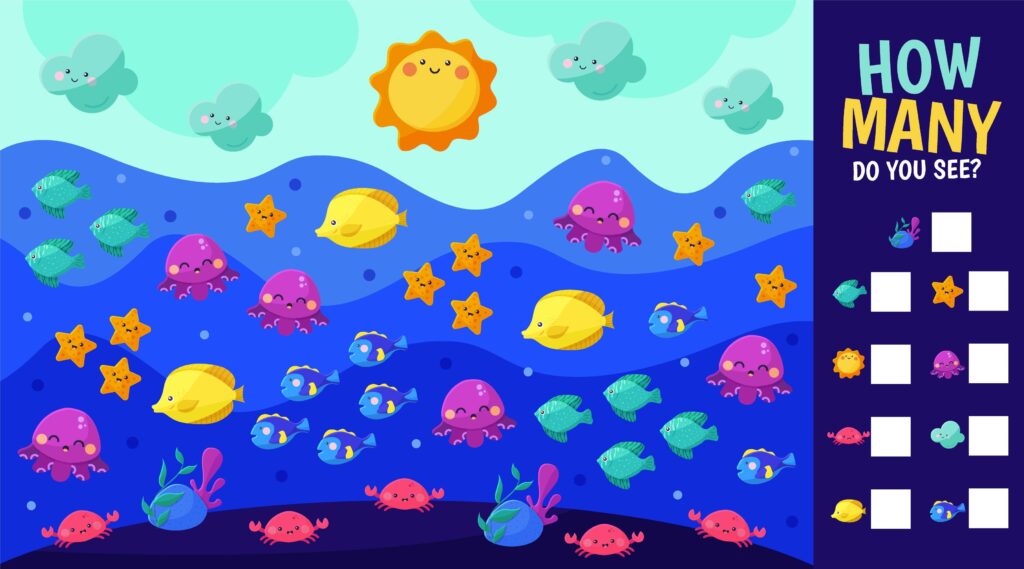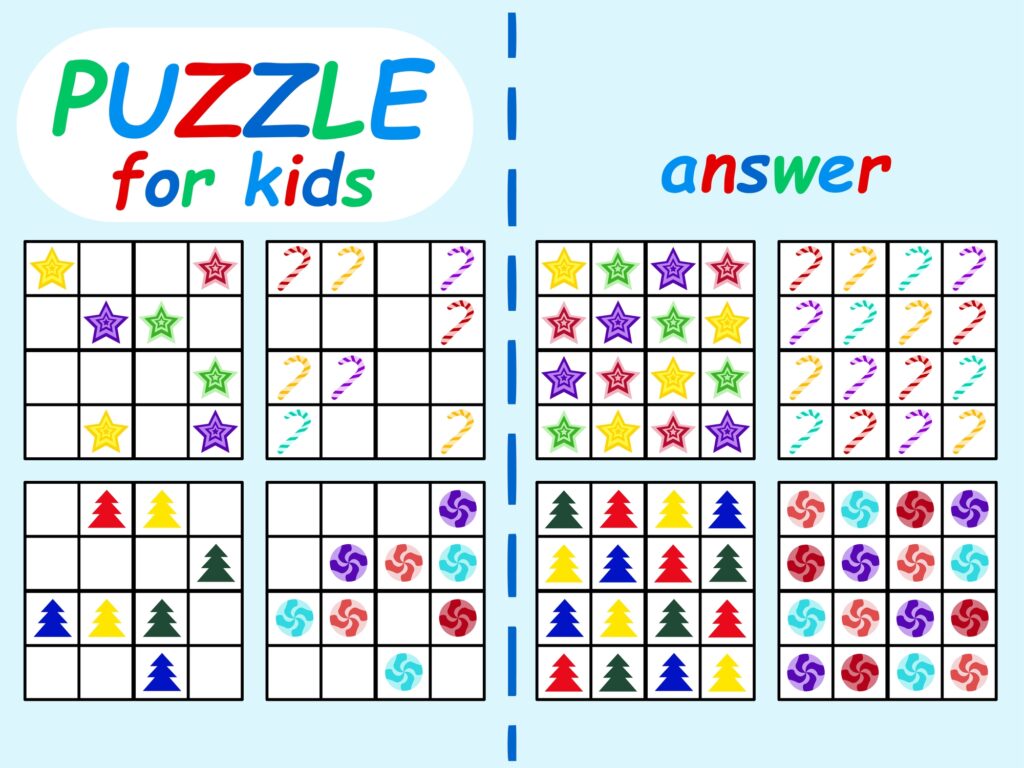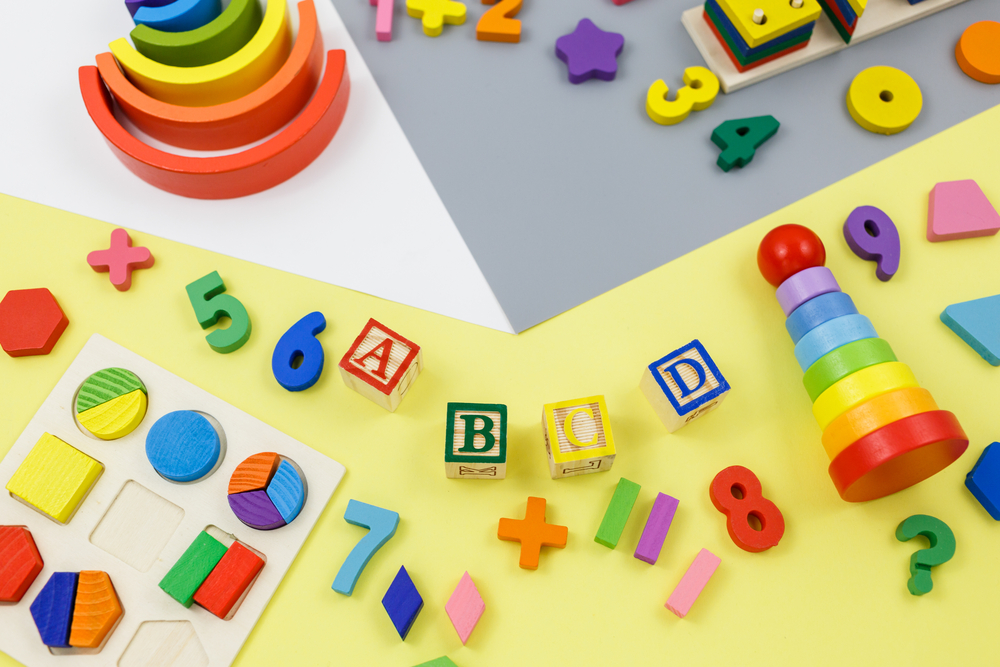For many students, Mathematics is synonymous with daunting numbers and complex equations. The traditional way of teaching leaves them confused and uninterested. The challenge lies in changing the idea that math is boring and sometimes even scary.
How can teachers make math classes and tuition comprehensible and enjoyable?
The solution: math games and puzzles.
In this article, we’ll explore how math games and puzzles turn the learning experience from confusing to captivating.

3 Benefits of Math Games
Math games and puzzles have the power to change how you see math. Here’s how using these tools can enhance learning.
- Reinforce mathematical concepts
Math games provide a hands-on approach to learning, allowing students to reinforce mathematical concepts interactively.
Instead of traditional methods, these games offer a dynamic environment where students can practically apply what they have learned. This hands-on engagement enhances their comprehension of mathematical principles, making the concepts more memorable and meaningful.
- Promote critical thinking and problem-solving
Through the challenges presented in math games, students are encouraged to think critically and solve problems.
These games often involve strategic thinking, logical reasoning, and decision-making, fostering the development of essential cognitive skills.
As students play these games and move through different levels, they come across different problems. This helps them get better at thinking, planning, and finding good solutions – skills that go beyond math.
- Enhance motivation and interest
Traditional math classes may struggle to maintain students’ interest and motivation. Math games, on the other hand, bring an element of excitement into the learning process.
The competitive or cooperative nature of these games, coupled with the immediate feedback they provide, creates a positive and motivating learning environment.
Students find themselves more eager to participate, as the challenges presented in the form of games transform math from a chore into an engaging activity.

6 Popular Math Games and Puzzles for Different Age Groups
There are engaging math games and puzzles that cater to different age groups. Let’s take a look:
Kindergarten 2 and Primary 1 Students
- Counting games
These games use colours and interactive features to keep kids interested. With simple and enjoyable activities, they help kids start understanding numbers and develop a liking for math right from the beginning of their learning journey.
Examples:
- Number Hunt: Hide objects around the room and have children find and count them.
- Counting with Blocks: Use building blocks to practice counting while stacking and arranging them.
- Hopscotch Counting: Create a hopscotch grid with numbers, and have children count as they hop through each square.
- Counting Fingers and Toes: Encourage kids to count their fingers and toes as a fun and interactive way to learn numbers.
- Shape and pattern recognition
Activities designed for shape and pattern recognition provide a hands-on experience for children to recognise and differentiate various shapes. Through games and interactive exercises, these activities not only introduce geometric concepts but also lay the groundwork for developing observational and analytical skills in an engaging and interactive way.
Examples:
- Shape Sorting: Provide a collection of objects and have children sort them based on shapes, such as circles, squares, and triangles.
- Patterned Playdough: Encourage kids to create simple patterns using playdough of different colours.
- Tangram: Using different shapes, form an object such as a house or a cat.
Primary 2 to 6 Students
- Geometry challenges
These challenges not only reinforce geometric concepts but also encourage a deeper understanding of spatial relationships.
Examples:
- Shape Scavenger Hunt: Students identify and categorize geometric shapes found in their surroundings.
- Angle Puzzles: Puzzles that require understanding and calculating angles in various shapes.
- Geometric Art Projects: Integrate geometry into art projects, such as creating geometric patterns or designs.
- Drawing Shapes: Have kids practice drawing basic shapes like circles, squares, and triangles, gradually progressing to more complex ones.
- Mirror Image: Completing an image by mirroring the side that is given.
- Fractions challenges
Putting different parts together to make a whole.
Examples:
- Paper Plate Combination: Design different cakes on a paper plate and have them cut into different fractions. See how different fractions can be placed together to make 1 whole.
Secondary 1 to 4 Students
- Algebra puzzles
Algebra puzzles take the complexity out of equations and turn problem-solving into an engaging challenge.
Examples:
- Equation Mazes: Students solve equations to navigate through a maze.
- Variable Bingo: A bingo game where equations are replaced with variables.
- Algebraic Crossword Puzzles: Integrating algebraic terms into crossword puzzles.
- Trigonometry quests
These activities turn abstract trigonometric ideas into real-world problems, making learning more engaging and enjoyable.
Examples:
- Angle Treasure Hunt: A treasure hunt where students use trigonometric principles to determine angles and distances.
- Trig Riddles and Puzzles: Riddles and puzzles that require the application of trigonometric ratios and identities to find solutions.
- Trigonometric Art Mapping: Students use trigonometric functions to create artistic mappings and designs.
- Calculus games
Calculus games provide a dynamic and interactive way for secondary school students to grasp complex concepts. Students get involved, trying to solve problems and earn rewards as they go. This hands-on approach helps them understand what calculus is about.
Examples:
- Derivative Puzzles: Solve puzzles where finding derivatives leads to uncovering hidden patterns or images.
- Integral Board Game: A board game where solving integrals helps advance through levels or acquire in-game rewards.
- Limit Challenge Cards: Use challenge cards that present scenarios requiring the application of limits to solve problems quickly.
You can also incorporate math puzzles such as Sudoku (and variations), logic puzzles and brain teasers, and mathematical riddles in learning.
These activities are suitable for students of different academic levels. For primary school students, it helps reinforce fundamental math skills, logic, and critical thinking. For secondary school students, these activities can be tailored to include advanced math concepts, offering a challenging and enjoyable opportunity for applying and expanding knowledge.

Online Resources and Apps for Math Games
From interactive games that reinforce basic arithmetic skills to applications that focus on advanced mathematical concepts, there is a host of online resources and apps that have transformed the way we learn and engage with math.
Here are some popular math game websites:
- Buzzmath
- Mathseeds
- Math playground
- DreamBox
- Cool Math Games
Want to play math games on the go? Here are some math game apps for smartphones and tablets:
- Khan Academy
- Prodigy
- DoodleMaths
- SplashLearn
Conclusion
By incorporating games and puzzles into math education, we create an enjoyable learning experience and foster a lifelong appreciation for the subject.
In essence, the goal is to create a lasting love for math and at Oodles Learning, we put that into practice.
We’re not just teaching math; we’re transforming classrooms into dynamic and engaging spaces where learning becomes a lifelong adventure.



